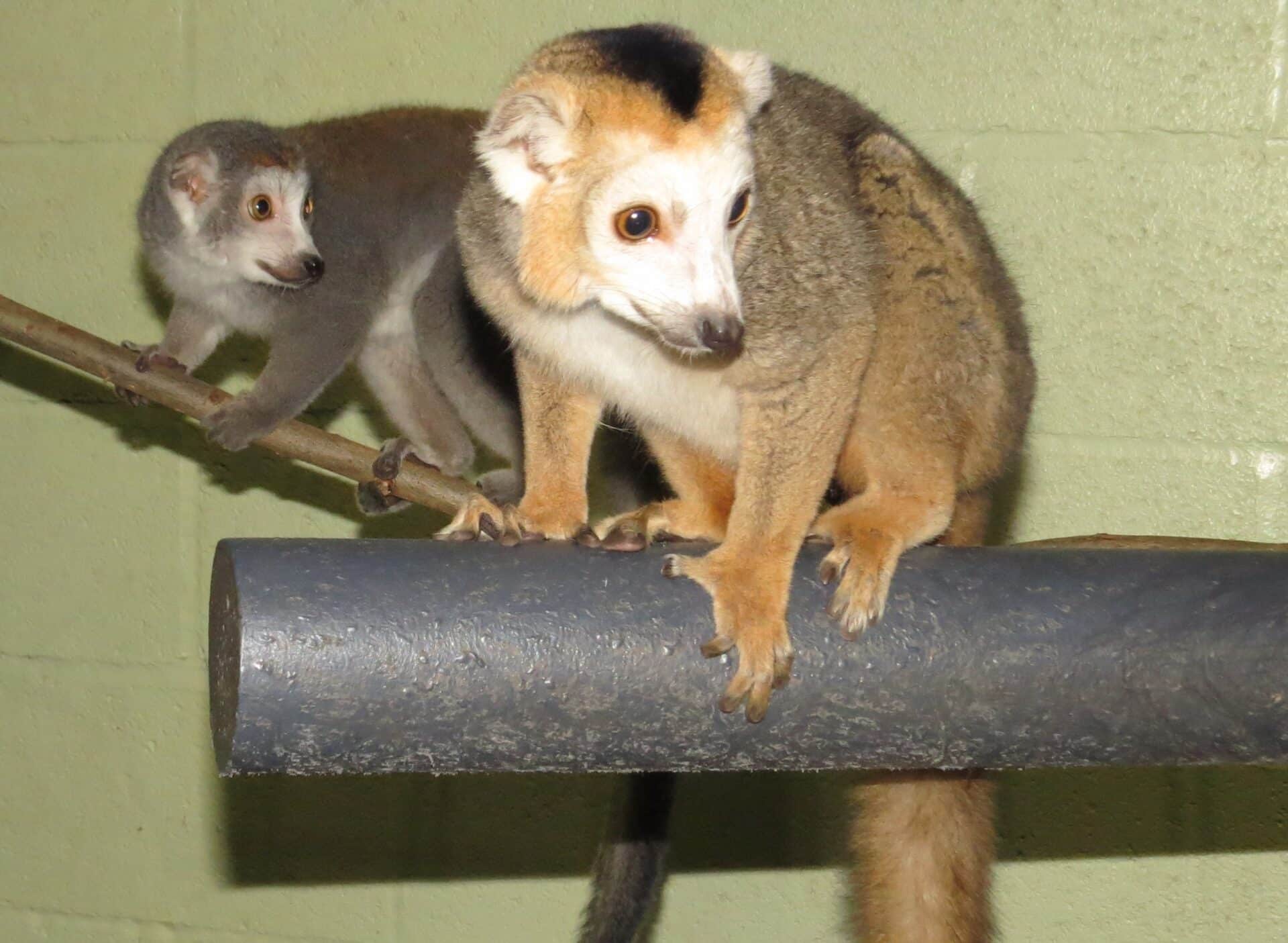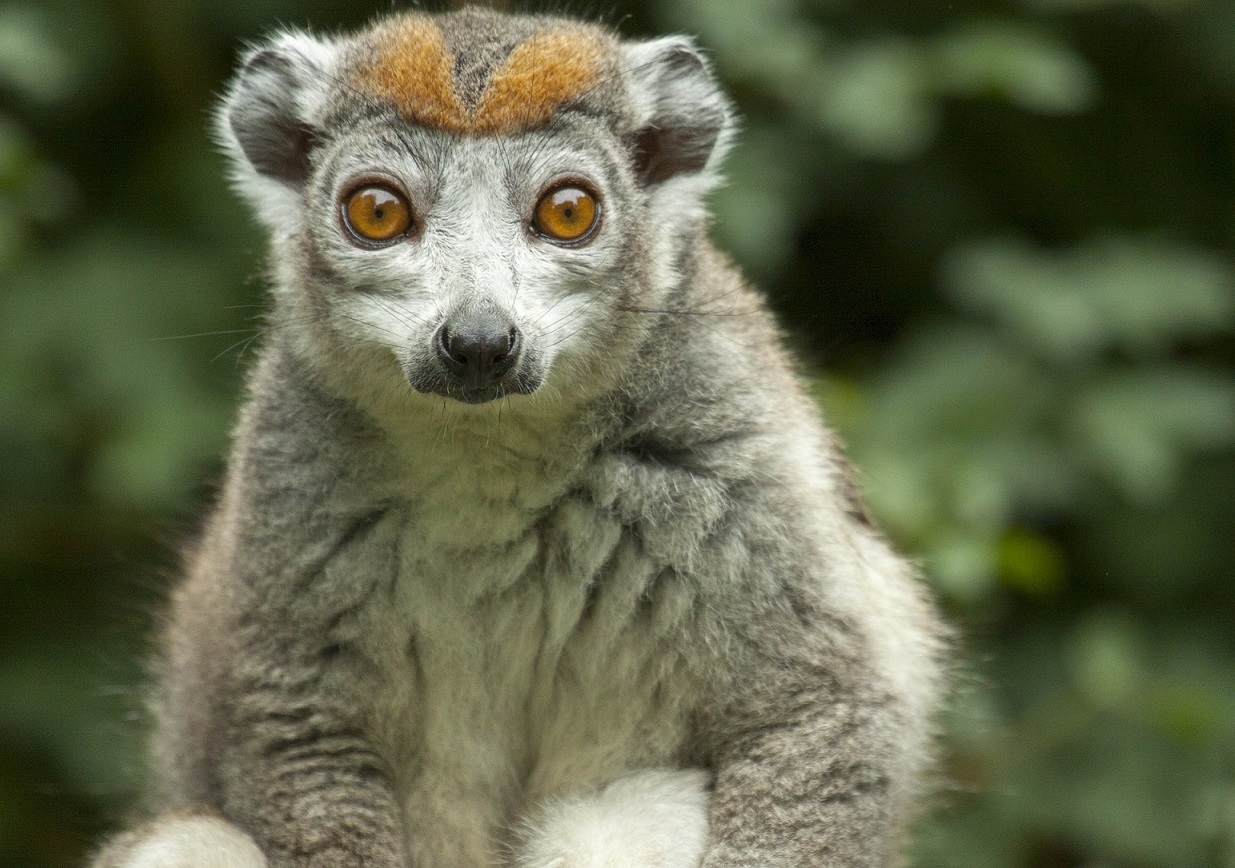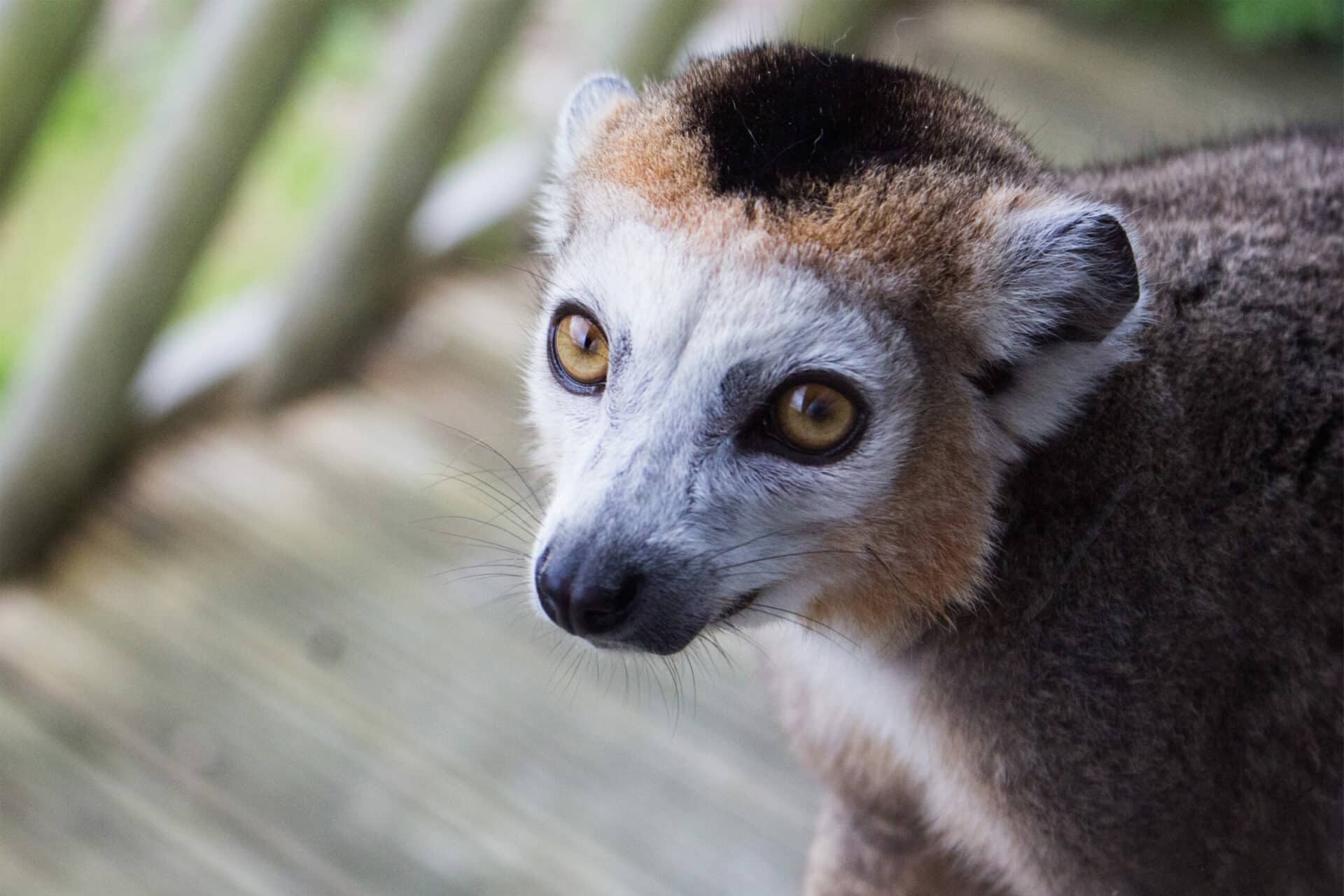Crowned lemur
Common Name: Crowned lemur
Scientific Name: Eulemur coronatus
Male and female crowned lemurs look different from each other. Males are chestnut brown, with a pale creamy-grey chest. Females are grey with a pale grey or cream chest. Both males and females have a chestnut-orange crown above their eyebrow line.
Crowned lemurs live in mixed groups of males, females and young. These groups are usually comprised of 5 to 6 lemurs, but may contain up to 15 individuals.
Large groups often split into smaller groups of 2 to 4 when foraging. They make grunting sounds to stay in contact with the other small groups.
Fast Facts
-
Status
Endangered
-
Size
Head-body length: 34-36 cm; tail: 41-49 cm
-
Weight
1.5 - 1.8 kg
-
Gestation
125 days
-
Young
1-2
In the wild
Crowned lemurs mainly eat fruit, but will also eat young leaves, flowers and pollen, and will occasionally eat insects and soil. These lemurs are known to raid farms and plantations for food.
These lemurs are found in the northern tip of Madagascar. Although they prefer to live in semi-deciduous forests, they are found in most forest types, including tropical moist forest and wooded savannah, as well as agricultural areas. These animals are often found in lianas or in thick cover. They frequently move down to the ground to travel and also to eat fallen fruit and lick the earth!
Crowned lemurs breed between late May and early June. Young are born from mid-September to the end of October. When infants are born they weigh about 60 grams. They are weaned at 6 to 7 months old. Males and females are able to breed from about 20 months of age.
This species is frequently preyed upon by fossas, and it is thought that they are also caught by crocodiles in some areas. It is believed that some raptors prey on crowned lemurs, because when these lemurs spot large birds of prey overhead they often make alarm calls.
The main threat faced by crowned lemurs is habitat loss. There are a number of reasons for this, including slash-and-burn techniques used to create agricultural land, charcoal production, mining and illegal logging. Crowned lemurs are also hunted for food and captured for the pet trade.
This species is on Appendix I of CITES, which means that international trade in crowned lemurs or any of their parts is illegal. These animals are found in several protected areas, including two national parks and two special reserves.



